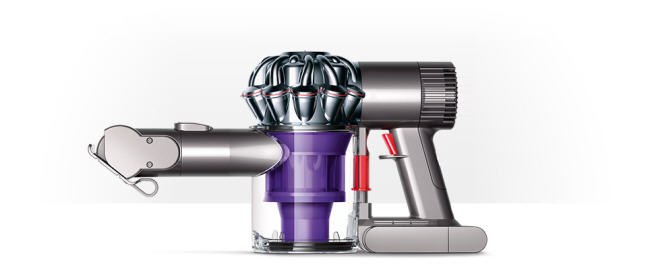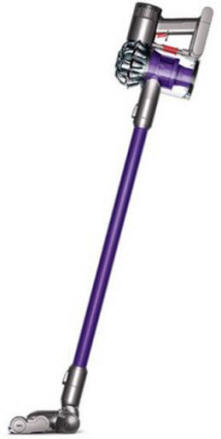Celebrated British engineer James Dyson takes technologies aimed at tasks we consider to be humdrum and makes them extraordinary. With the Dyson DC59 hand-held vacuum cleaner this tradition of engineering has effectively added turbo in the form of a digital motor that turns at a fascinating 11,000 times per minute.
This review probably should have run in February but for one of life’s unexpected moments and I suppose fate, it didn’t. While out jogging one night I tripped on a footpath and did a good job on my left hand which I used to break my fall. I dislocated one finger, broke another and sustained a fifth metacarpal fracture – otherwise known as a “boxer’s break”. You could say it gave a new meaning to pounding the pavement.
Basically the upshot was I was in a plaster caste and could no longer drive or do a lot of things you usually take your left arm for granted. Because I live in the countryside I was effectively house-bound for a month and had to do everything – writing, cooking and cleaning – with just one hand.
In a strange way getting to review the Dyson D-59 Animal cordless vacuum cleaner around the same time was a blessing in disguise. Serendipity! You see, it is only apparent to people that when confined to base just how messy we can actually be and the cleaning still needs to be done. With my one good arm the DC59 helped me at least attempt to keep the house clutter-free.
This device, and the DC44 before it, are aimed at a growing niche in society – people who are time poor, probably live in apartments and small houses and who don’t have the resources or inclination to pay a cleaner. Nor do they have the time, energy or space for a fully-size vacuum cleaner.
The idea is quite a good one. A hand-held vacuum that can do pretty much many of the duties of a full-size vacuum cleaner and which can be neatly stowed away upon a handy wall bracket along with all of its utensils.
The problem up until now – as it has been with all hand-held vacuum cleaners – has been power. Most went kaput after a year of use and you would be lucky to have gotten 10 minutes of steady usage.
Dyson solved this problem with the DC44, making it possible to clean continuously for 20 to 25 minutes on the trot. With the DC59 the output is similar, but definitely more poweful.
Features

I reviewed the DC44 in 2012 and was impressed not only by how different it looked to every other hand-held vacuum cleaner in the market but also just how functional it was. It was light, adaptable and powerful.
The DC59 is the DC44 reborn in an even more powerful, muscular form – a bit like switching from an ordinary car to one with turbo boost. The car analogy is a good one – the DC44 and DC59 from a distance look alike, but look closer and the differences are obvious. For one thing the radial cyclones that form part of the 350w digital motor are bigger than on the DC44.
There’s a good reason for that. The DC59 is powered by the v6 Dyson digital motor which spins at up to 110,000 times per minute. 15 cyclones are arranged across two tiers to increase airflow. That’s quite a bit more powerful than the DC44 which spun at 104,000rpm and which was at that point five times faster than an F1 racing car’s engine.
Again, a feat of engineering that Dyson is renowned for. Incredibly they’ve managed to engineer a vacuum cleaner with an engine three times stronger than contemporaries on the marketplace and package it within a hand-held device.
Verdict
Other changes that I found welcome in the DC59 are quite subtle but useful. One of my laments about the DC44 was that I could never remember if I had charged it or not and when I went to grab it to tidy something in a hurry or just give a room a bit of a going over the battery was dead.

Fortunately, the DC59 has a helpful little LED light that flashes to let you know when it is being charged and if it has power. Simple but effective. Perhaps future versions may come with a little meter to show actually how much power remains.
Another brilliant change in the DC59 has to be the re-engineered floor tool, which is lighter and also better at gathering up fine dust. This is made possible by introducing carbon fibre filaments and nylon bristle strips. The new head was also motorised, boosting the ability to gather dirt and dust.
As I’d said earlier, I was injured but I was not going to shy away from doing the housework so the fact that there was a device that weighted just 2.11kg to help me was invaluable.
In essence, I assume the engineers at Dyson challenge themselves to constantly improve and pack more technology into smaller spaces and with the DC59 they have largely succeeded. It is in effect, a turbo boost.
The DC59 went on sale in Ireland at the start of this year and is available in all electrical retailers for €399.99. It’s more expensive than most household vacuum cleaners but for those who like power but not clutter it’s not a bad investment to make.